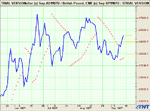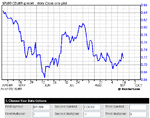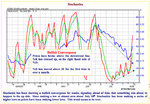Hi BB -
I can view this chart easy enough butam not able to access past years charts to decide whether the current level is historically high.
Was this trade suggested by JR? MRCI?
Is your trading style concerned more with trading against short term extreme price movements rather than with expected seasonal movements? I have thinking a lot about this myself over the past few days using the charts from MRCI which show the spread distribution in each of the last 15 years.
Thanks
FN
I can view this chart easy enough butam not able to access past years charts to decide whether the current level is historically high.
Was this trade suggested by JR? MRCI?
Is your trading style concerned more with trading against short term extreme price movements rather than with expected seasonal movements? I have thinking a lot about this myself over the past few days using the charts from MRCI which show the spread distribution in each of the last 15 years.
Thanks
FN



